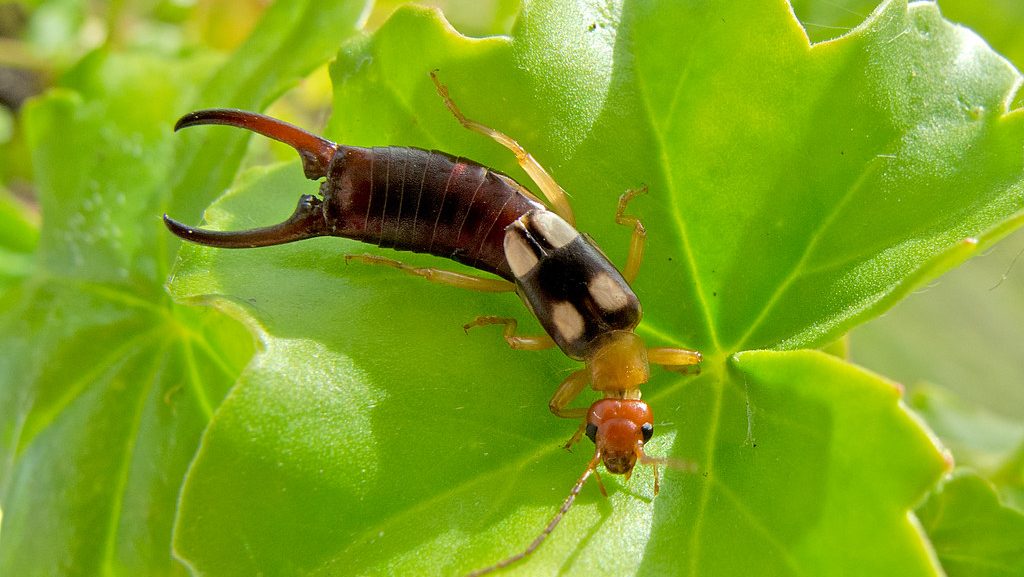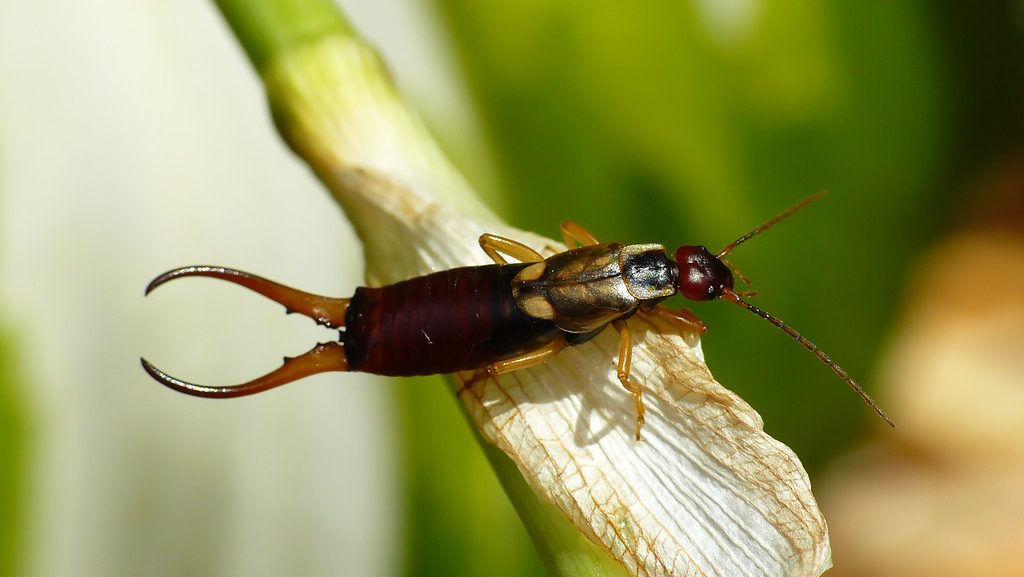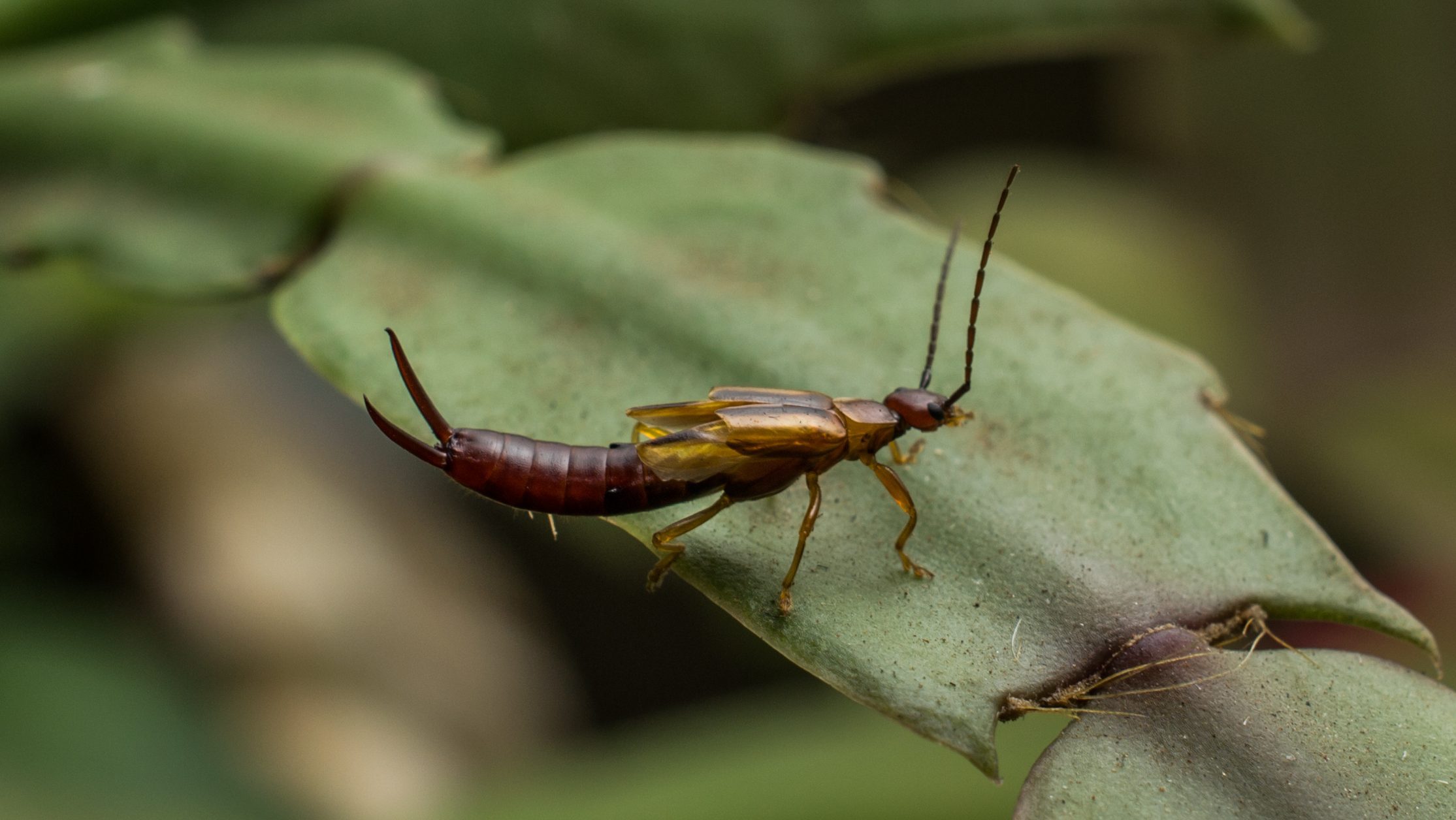Key Takeaways
- Earwigs do not burrow into human ears or brains.
- They prefer moist, dark environments like gardens and basements.
- Earwigs help decompose organic material and are mostly harmless.
- Sealing cracks and reducing moisture can prevent earwig infestations.
 Earwigs have long been linked to an unsettling myth: that they crawl into people’s ears while they sleep, burrow into the brain, and lay eggs. This widespread belief has terrified homeowners for generations. But is there any truth to it?
The short answer: No, earwigs do not seek out human ears, nor do they burrow into brains. In reality, earwigs are harmless insects that prefer moist, dark environments and have no interest in humans. Let’s explore the origins of this myth, the real behavior of earwigs, and how to prevent them from becoming an unwelcome presence in your home.
Earwigs have long been linked to an unsettling myth: that they crawl into people’s ears while they sleep, burrow into the brain, and lay eggs. This widespread belief has terrified homeowners for generations. But is there any truth to it?
The short answer: No, earwigs do not seek out human ears, nor do they burrow into brains. In reality, earwigs are harmless insects that prefer moist, dark environments and have no interest in humans. Let’s explore the origins of this myth, the real behavior of earwigs, and how to prevent them from becoming an unwelcome presence in your home.
Why Are They Called “Earwigs”?
The name earwig comes from an old European superstition. The Old English term ēare-wicga translates to “ear insect,” suggesting that these bugs crawl into human ears. Similar myths exist in other languages, such as the German Ohrwurm (“ear worm”) and the French perce-oreille (“ear piercer”). These myths likely arose because earwigs are nocturnal and occasionally hide in dark, humid places, such as folded fabric, shoes, or garden debris. However, they do not intentionally crawl into human ears.
Do Earwigs Actually Crawl Into Human Ears?
While it is technically possible for any small insect to accidentally enter a person’s ear, earwigs do not seek out human ears. They prefer damp environments, decaying plant matter, and crevices in soil. The fear of an earwig burrowing into the brain is completely unfounded. Medical professionals confirm that cases of earwigs found in ears are extremely rare and occur by accident rather than intent. Other insects, such as cockroaches or flies, are more commonly reported in ear-related incidents than earwigs.Understanding Earwigs: What Do They Actually Do?
Earwig Facts and Behavior
-
Diet: Earwigs primarily feed on decaying plant matter, fungi, and occasionally small insects. They help decompose organic material, making them beneficial for gardens.
-
Habitat: They are attracted to moisture and tend to live in gardens, flowerbeds, and shaded outdoor spaces. Indoors, they may be found in bathrooms, basements, and damp crawl spaces.
-
Pincers (Cerci): Earwigs have intimidating-looking pincers on their rear end, which they use for defense and mating, not for harming humans.
-
Reproduction: Female earwigs lay eggs in the soil and protect their young—an uncommon behavior among insects.
Are Earwigs Harmful to Humans?
No, earwigs do not pose a danger to humans. They do not sting, transmit diseases, or cause structural damage. At worst, they may pinch if handled, but they are not aggressive and prefer to avoid human contact.How to Keep Earwigs Out of Your Home

1. Reduce Moisture
Ways to Reduce Moisture
-
Fix leaky pipes and faucets.
-
Use a dehumidifier in damp areas such as basements and crawl spaces.
-
Ensure proper drainage around your home to prevent water buildup.
2. Seal Entry Points
How to Block Earwig Entry
-
Seal cracks and gaps around windows, doors, and foundations with caulk.
-
Install door sweeps and window screens to block entry.
-
Inspect and repair torn screens and weather stripping.
3. Eliminate Hiding Spots
Removing Earwig Hiding Places
-
Keep mulch, firewood, and leaf piles away from your home’s foundation.
-
Trim overgrown bushes and vegetation that create moist hiding spots.
-
Store outdoor items like gardening tools and furniture properly to reduce damp environments.
4. Use Traps and Natural Deterrents
Traps and Natural Remedies
-
Place damp rolled-up newspapers or small containers with soy sauce and oil overnight to attract and trap earwigs.
-
Sprinkle diatomaceous earth around entry points to deter them.
-
Use essential oils like lavender, citrus, and peppermint near doors and windows to repel earwigs.
5. Consider Professional Pest Control
If earwigs persist despite your efforts, a pest control professional can identify and treat the infestation effectively.What to Do If a Bug Gets Stuck in Your Ear
Though earwigs do not actively seek human ears, any small insect can accidentally enter an ear canal. If this happens, follow these steps:Steps to Remove a Bug from Your Ear
-
Stay calm – Panicking can make removal more difficult.
-
Tilt your head – Turn the affected ear downward to encourage the bug to exit.
-
Do not use cotton swabs or tweezers – These can push the insect further inside.
-
Use oil or warm water – A few drops of mineral oil or warm water can help flush the insect out.
-
Seek medical assistance – If the bug does not come out easily, consult a doctor for safe removal.




